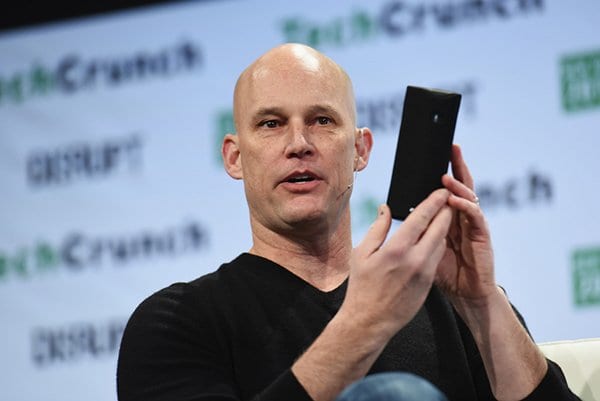
Editor: Philip Ragner | Tactical Investor
Dethroned: Amazon Echo Dot – its Changing Status
Once upon a time, the Amazon Echo Dot reigned supreme as the unrivalled king of smart speakers, captivating the hearts and homes of countless consumers worldwide. Its compact design, affordable price point, and the unparalleled power of Alexa, Amazon’s virtual assistant, propelled it to the forefront of the smart home revolution. It stood as a symbol of the transformative potential of the Internet of Things (IoT) era, captivating our imagination with its seamless integration into our daily lives.
The Amazon Echo Dot emerged as a trailblazer, introducing us to a world where voice commands became the gateway to many possibilities. With a simple voice prompt, it could play our favourite songs, answer burning questions, control smart devices, and even order groceries. Its omnipresence in living rooms, kitchens, and bedrooms transformed how we interacted with technology, ushering in unprecedented convenience and connectivity.
Consumers embraced the Echo Dot, enamoured by its ability to streamline tasks and enhance their everyday experiences effortlessly. Its robust ecosystem of skills and integrations expanded its capabilities, making it an indispensable companion in our increasingly connected lives. From managing calendars to providing personalized news updates, the Echo Dot seamlessly wove itself into the fabric of our routines, becoming a trusted ally and confidant.
However, as the landscape of smart speakers evolved, so did the challengers to the Echo Dot’s throne. Competitors emerged, introducing innovative features, sleek designs, and enhanced functionality. The once-unassailable reign of the Echo Dot faced formidable contenders vying to capture the hearts and homes of consumers.
The changing status of the Amazon Echo Dot is a testament to the dynamic nature of the technology landscape. As new players enter the scene, the market becomes a battleground of innovation, where advancements are made and boundaries are pushed. Consumers now face many options, each promising unique features and experiences, challenging the Echo Dot’s dominance.
Yet, in this evolving landscape, the Amazon Echo Dot continues to adapt and grow, leveraging its established user base and the power of the Alexa ecosystem. Amazon remains committed to refining its flagship smart speaker, introducing new iterations that enhance audio quality, improve design aesthetics, and deepen integration with smart home devices. The Echo Dot’s story is far from over as it navigates the ever-changing tides of consumer demand and technological advancement.
As we witness the transformation of the Amazon Echo Dot’s status, we embark on a captivating journey, exploring the rise of new contenders, the evolution of smart speaker technology, and the changing preferences of consumers. Together, let us delve into the fascinating realm of smart speakers, where innovation and competition shape how we interact with technology and where the Echo Dot, once a reigning monarch, seeks to retain its relevance in a world brimming with possibilities.
The Rise to Power
The Echo Dot’s ascent to prominence was nothing short of meteoric, heralding a new era in smart home technology. It transcended its origins as a mere speaker, evolving into a multifaceted device that seamlessly blended the roles of personal assistant, home automation hub, and entertainment center. This transformation was pivotal in reshaping the way people interacted with their living spaces, forging an unprecedented level of convenience that resonated with millions of households across the globe.
At its core, the Echo Dot was more than just a piece of hardware; it represented a paradigm shift in how technology integrated into daily life. Its compact design belied a powerhouse of capabilities, making it an unobtrusive yet indispensable presence in homes. The integration of Alexa, Amazon’s virtual assistant, was a game-changer, allowing users to effortlessly control smart devices, play music, set reminders, and even answer queries with a simple voice command. This conversational interface marked a departure from traditional user interactions, fostering a more intuitive and natural connection between humans and technology.
As the Echo Dot infiltrated households, its impact on the concept of home automation was profound. Suddenly, mundane tasks became opportunities for automation – lights dimming with a word, thermostats adjusting to preferred temperatures, and doors locking or unlocking at the sound of a voice. The Echo Dot seamlessly orchestrated these elements, transforming living spaces into smart, responsive environments. Home automation was no longer a futuristic fantasy but a tangible reality, and the Echo Dot emerged as its orchestrator, centralizing control and simplifying the complex web of interconnected devices.
Entertainment, too, underwent a revolution with the Echo Dot at the helm. Its integration with music streaming services, audiobooks, and podcasts turned it into a versatile entertainment center. Users could curate playlists, explore new genres, and even delve into immersive narratives with a mere vocal prompt. The Echo Dot’s role as an entertainment hub extended beyond audio, incorporating compatibility with smart TVs and streaming devices. This convergence of functions solidified its status as a cornerstone of modern living rooms, offering a dynamic and personalized entertainment experience.
The global embrace of the Echo Dot underscored its universal appeal. Its affordability, coupled with continuous updates and improvements, made it accessible to a diverse demographic. Families, tech enthusiasts, and individuals seeking to streamline their daily routines found common ground in the Echo Dot’s versatility. Its rise to power was fueled not only by technological prowess but also by its ability to seamlessly integrate into various lifestyles, transcending socioeconomic boundaries.
Furthermore, the Echo Dot’s impact rippled through the tech industry, influencing competitors to adapt and innovate. The success of this unassuming device sparked a surge in the development of similar smart speakers and home automation products. The market became a hotbed of creativity, with companies vying to offer the next breakthrough in user experience and functionality. The Echo Dot, having set the benchmark, continued to evolve, introducing features like enhanced voice recognition, improved sound quality, and expanded compatibility with third-party devices.
In conclusion, the Echo Dot’s rise to power marked a transformative moment in the intersection of technology and daily life. From its humble origins as a speaker, it evolved into a multifunctional hub that seamlessly integrated into the fabric of modern households. The convergence of personal assistant capabilities, home automation control, and entertainment functions propelled the Echo Dot to the forefront of the smart technology revolution. Its influence extended beyond individual homes, shaping the landscape of the tech industry and inspiring a wave of innovation. The Echo Dot’s journey exemplifies the dynamic synergy between user-centric design, technological innovation, and the evolving needs of a global audience.
The Peak of Popularity
During the zenith of its popularity, the Echo Dot transcended its status as a mere product, evolving into a cultural phenomenon that resonated far beyond the realm of technology. It became a ubiquitous presence in the media landscape, the focal point of numerous articles, reviews, and discussions. The discourse surrounding the Echo Dot extended beyond its technical specifications, delving into its societal impact and the evolving relationship between individuals and technology. It wasn’t merely a device; it had become a symbol, a testament to a household’s technological prowess and adaptability.
As the subject of innumerable articles, the Echo Dot garnered attention not just from tech enthusiasts but from a broader audience eager to understand its implications. Journalists and bloggers explored its multifaceted features, delving into its ability to streamline daily routines, enhance entertainment experiences, and serve as a gateway to the broader world of smart home technology. The media’s fascination with the Echo Dot mirrored a larger cultural shift—an acknowledgment that technology was not just a tool but an integral part of contemporary lifestyles.
Reviews, both professional and user-generated, painted a vivid picture of the Echo Dot’s impact on daily life. Users shared anecdotes of newfound convenience, recounting how voice commands simplified tasks and transformed their living spaces into smart, responsive environments. The resonance of these personal stories contributed to the Echo Dot’s appeal, creating a sense of community among users who found common ground in their experiences with this unassuming yet powerful device. Positive reviews became a testament to the device’s ability to seamlessly integrate into diverse routines and preferences.
Discussions surrounding the Echo Dot were not confined to tech forums; it permeated everyday conversations, making the device a symbol of modern living. It became a cultural touchstone, symbolizing a household’s embrace of technological advancement. The presence of an Echo Dot was indicative of a tech-savvy lifestyle, sparking conversations about the ways in which smart technology was reshaping domestic spaces. It wasn’t just a gadget; it was a marker of cultural currency, an emblem of a household’s ability to adapt to the ever-evolving landscape of modern conveniences.
In many ways, the Echo Dot became a status symbol, akin to owning the latest fashion accessory or a luxury car. Its compact design and unassuming presence belied its significance as a symbol of innovation and connectivity. Owning an Echo Dot wasn’t just about having a smart speaker; it was about aligning oneself with a forward-thinking, tech-centric lifestyle. The device’s popularity reached beyond tech enthusiasts, appealing to individuals who sought not only functionality but also a sense of belonging to a larger cultural movement.
This cultural iconography wasn’t limited to its physical presence; it extended to the digital realm. Social media platforms became a virtual stage for users to showcase their Echo Dot experiences. From creative uses of voice commands to home automation setups, individuals shared snapshots of their tech-infused lives. The Echo Dot, once confined to the physical spaces of homes, now had a virtual presence, contributing to the creation of an online community united by a shared appreciation for the device’s transformative capabilities.
In essence, at the peak of its popularity, the Echo Dot transcended the boundaries of being a mere product. It became a cultural touchstone, the subject of widespread media attention, user testimonials, and everyday conversations. Its status as a symbol of technological prowess and cultural relevance solidified its place in the collective consciousness, marking a pivotal moment in the integration of smart technology into the fabric of modern living. The Echo Dot wasn’t just a device; it had become a cultural icon, leaving an indelible mark on the evolving narrative of technology in society.
The First Signs of Change
Yet, as with the ebb and flow of innovation, change emerged as an inevitable force in the trajectory of the Echo Dot’s dominance. The initial signs of this transformation were subtle but significant, setting the stage for a shifting landscape in the world of smart home technology. The market, once dominated by the Echo Dot’s indisputable presence, experienced the ripples of disruption as new contenders entered with compelling alternatives, presenting consumers with a broader spectrum of choices and challenging the established monopoly.
The emergence of new competitors marked a turning point in the smart speaker arena. Rivals, fueled by the Echo Dot’s success, sought to capitalize on the growing demand for interconnected, voice-activated devices. Their offerings mirrored the Echo Dot’s functionality, boasting similar features at competitive price points. This influx of alternatives signaled a departure from the Echo Dot’s singular reign, introducing a healthy dose of competition that fueled innovation and prompted consumers to reevaluate their preferences.
As the market expanded, consumers found themselves at the forefront of a technological crossroads. No longer bound to a single option, they could explore a variety of devices, each vying for attention with its unique set of features and design philosophies. The Echo Dot, while a pioneer, now faced the challenge of staying ahead in an increasingly diverse and dynamic landscape. The advent of choice reshaped consumer expectations, pushing the Echo Dot to evolve and differentiate itself to maintain its standing as a frontrunner.
The evolution of consumer preferences also played a pivotal role in the changing tide. While the Echo Dot had initially captured hearts and homes with its compact design and versatile capabilities, consumers began to articulate new desires. They sought not only affordability and functionality but also a seamless integration with other smart devices and a more personalized user experience. The first signs of change were not merely about the influx of competitors; they were also a reflection of a maturing consumer base demanding more from their smart technology investments.
In response to this shifting landscape, the Echo Dot underwent a series of updates and enhancements. It was no longer enough to be a smart speaker with a virtual assistant; it had to adapt to the evolving needs of its user base. This led to improvements in voice recognition technology, expanded compatibility with third-party devices, and a focus on creating a more intuitive user interface. The Echo Dot was no longer just competing against new entrants; it was engaged in a constant dialogue with its users, seeking to understand and fulfill their evolving expectations.
The changing dynamics also prompted a reevaluation of the Echo Dot’s role in the broader ecosystem of smart home technology. It wasn’t just about being a standalone device; it needed to seamlessly integrate into a network of interconnected devices, offering a holistic and interconnected experience. The first signs of change, triggered by the entry of competitors, catalyzed a paradigm shift where smart speakers were no longer evaluated in isolation but as integral components of a larger smart home ecosystem.
In conclusion, the first signs of change in the Echo Dot’s journey were marked by the subtle but impactful entry of competitors into the market. The echoes of disruption reverberated through consumer choices, ushering in a phase where the once-monolithic presence of the Echo Dot faced competition and, in turn, evolved to meet the changing demands of a dynamic market. This period of transformation was not only about the rise of alternatives but also about the Echo Dot’s resilience and adaptability as it navigated the currents of innovation and consumer expectations. The first signs of change were not a threat but an impetus for growth and evolution in the ever-evolving landscape of smart home technology.
The Arrival of Challengers
The entrance of formidable challengers, exemplified by products like the Google Home Mini and Apple HomePod Mini, heralded a pivotal juncture in the landscape of smart speakers. These newcomers brought with them a fresh wave of innovation, presenting consumers with alternatives that rivaled, and in some aspects, surpassed the features offered by the reigning Echo Dot. The smart speaker arena, once solely dominated by Amazon’s creation, now found itself in the midst of a dynamic competition, where the Echo Dot’s supremacy was no longer assured.
The Google Home Mini, with its sleek design and Google Assistant integration, emerged as a strong contender. Its seamless connectivity with Google services, coupled with powerful voice recognition capabilities, presented a compelling alternative to the Echo Dot. The consumer discourse expanded beyond the Echo Dot as users weighed the merits of Google’s offering, contemplating the advantages of a device deeply integrated into the Google ecosystem.
Simultaneously, Apple’s entry into the miniature smart speaker arena with the HomePod Mini brought a touch of Cupertino’s design elegance and the Siri virtual assistant. Apple’s emphasis on premium audio quality, coupled with its ecosystem compatibility, introduced a new dimension to the competition. The HomePod Mini appealed not only to Apple enthusiasts but also to users seeking a seamless integration with their existing Apple devices.
These challengers, armed with cutting-edge features and robust ecosystems, began to carve out their space in the smart speaker market. The Echo Dot, once the undisputed king, now faced a formidable siege as consumers explored the diverse landscape of choices before them. The market dynamic shifted from a monopoly to a multifaceted ecosystem, where each contender sought to distinguish itself based on its unique strengths and capabilities.
The impact of these challengers was not only confined to features and technical specifications; it extended to the overall user experience. Consumers found themselves grappling with decisions beyond mere functionality – they were choosing a smart speaker that aligned with their preferred virtual assistant, integrated seamlessly into their existing tech ecosystems, and offered a user interface that resonated with their preferences. The advent of challengers elevated the discourse from a singular focus on a device’s capabilities to a broader consideration of how these devices seamlessly fit into users’ lifestyles.
This influx of competition prompted Amazon to reevaluate and fortify the Echo Dot’s offerings. The response was not merely a defensive maneuver but an opportunity to innovate further. The Echo Dot responded with updates that improved its sound quality, refined its voice recognition capabilities, and enhanced its compatibility with a wider array of smart home devices. The challengers, in turn, spurred a cycle of continuous improvement as each player sought to outdo the other in a quest for technological supremacy.
The arrival of challengers not only diversified the smart speaker market but also accelerated the pace of innovation. It was no longer a one-horse race; it became a dynamic arena where companies pushed the boundaries of what smart speakers could achieve. The competition fostered a spirit of ingenuity, with each player striving to introduce features that not only matched the user expectations set by the Echo Dot but also surpassed them in novel ways.
In essence, the arrival of challengers marked a paradigm shift in the smart speaker market. It wasn’t just about one dominant player; it was about a vibrant ecosystem of choices, each with its unique strengths and appeal. The Echo Dot, once the unchallenged sovereign, found itself amidst a competitive landscape that not only tested its resilience but also propelled it to evolve and redefine its role in the ever-evolving narrative of smart home technology. The smart speaker arena was no longer a monarchy; it had transformed into a thriving democracy of innovation and consumer choice.
The Changing Consumer Preferences
In tandem with the influx of competitors, a significant shift occurred in the realm of consumer preferences, reshaping the narrative around smart speakers. As the Echo Dot faced new challengers, consumers no longer solely prioritized convenience and cutting-edge features; a new paradigm emerged where privacy and data security took center stage. The once-unquestioned symbol of convenience, the Echo Dot, found itself under scrutiny as evolving consumer values brought concerns about privacy to the forefront.
The advent of smart speakers had initially captivated users with the allure of seamless integration into their daily lives. However, as the technology matured, so did the awareness of potential privacy implications. Consumers, now more attuned to the intricacies of data security, started questioning the always-listening nature of smart speakers, including the Echo Dot. The very convenience that had endeared these devices to users now sparked a reevaluation of the trade-off between ease of use and the safeguarding of personal information.
The changing landscape prompted a broader conversation about data collection and storage practices. Users, once enamored by the intuitive responsiveness of their smart speakers, began to question how their voice commands and interactions were being handled. The Echo Dot, like its counterparts, was no longer exempt from scrutiny. Privacy concerns were no longer abstract; they became a tangible consideration influencing consumer decisions about which smart speaker to invite into their homes.
This shift in consumer sentiment prompted a response not only from Amazon but from the entire smart speaker industry. Transparency became a buzzword, and companies, including Amazon, sought to demystify their data handling processes. Clearer communication about how voice recordings were stored, who had access to them, and the steps taken to protect user privacy became integral aspects of companies’ strategies to regain and maintain consumer trust.
Furthermore, the changing landscape influenced the design and functionality of smart speakers. The Echo Dot, once solely celebrated for its always-ready responsiveness, now introduced features aimed at addressing privacy concerns. Physical switches that allowed users to physically disconnect microphones were integrated, offering a tangible and visible means for users to control when their smart speakers were actively listening. This newfound focus on user agency and control became a pivotal element in the evolving design philosophy of smart speakers.
As consumers became more discerning, the industry witnessed a surge in demand for privacy-centric features. The concept of on-device processing gained traction, allowing more data to be processed locally rather than being constantly relayed to external servers. This approach aimed to strike a balance between providing the desired functionalities of smart speakers and minimizing the potential exposure of personal data. The Echo Dot, in response to these changing preferences, adapted its architecture to align with this shift towards enhanced privacy measures.
The Dethroning
The dethroning of the Echo Dot unfolded as a nuanced and gradual process, reflecting the intricate interplay of changing market dynamics, evolving consumer preferences, and the escalating competition within the smart speaker realm. This shift was not marked by a sudden overthrow, but rather a transformative evolution that saw the once-unrivaled Echo Dot adapting to the shifting landscape.
The changing market dynamics, propelled by the entry of formidable competitors, introduced a diversification of choices for consumers. The Google Home Mini and Apple HomePod Mini, with their innovative features and robust ecosystems, disrupted the Echo Dot’s monopoly. Consumers, now empowered with alternatives that resonated with their preferences, began to explore beyond the confines of the Echo Dot. The dethroning wasn’t a defeat; it was an acknowledgment of a more dynamic, consumer-driven marketplace where loyalty was earned through continual innovation and responsiveness.
Evolving consumer preferences further fueled the dethroning process. The initial allure of the Echo Dot’s convenience yielded to a more nuanced consideration of privacy and data security. The once-revered symbol of seamless integration into daily life found itself grappling with concerns about always-on listening and data handling practices. The Echo Dot responded by not just adapting its features but by actively participating in the industry-wide conversation about privacy standards, recognizing that its continued relevance hinged on aligning with the evolving values of its user base.
The increasing competition, though a catalyst for change, also prompted the Echo Dot to undergo a metamorphosis. Amazon’s response wasn’t one of surrender; it was a strategic recalibration. The Echo Dot evolved to meet the challenge head-on, introducing updates that not only enhanced its technical capabilities but also addressed the emerging priorities of consumers. The smart speaker landscape was no longer a static monarchy; it had transformed into a dynamic republic where innovation, privacy, and user-centric design were the currencies of influence.
This transformative process wasn’t about defeat; it was about resilience and adaptability. The Echo Dot, once the unchallenged sovereign, navigated the currents of change by actively engaging with the multifaceted challenges presented by competitors, changing consumer values, and heightened privacy concerns. Its journey through the dethroning phase was a testament to its ability to learn, evolve, and remain relevant in an industry that demanded constant innovation.
Moreover, the dethroning was not just about the Echo Dot; it was indicative of the broader evolution of the smart speaker market. The once-clear hierarchy now gave way to a landscape where each device had to earn its place through continuous refinement and a keen understanding of user needs. It wasn’t a narrative of defeat but a chapter in the ongoing story of technological progress, where the Echo Dot played a pivotal role in shaping the very market it once dominated.
In essence, the dethroning of the Echo Dot was a multifaceted process that unfolded as a result of the intricate dance between market forces, changing consumer values, and the relentless march of technological advancement. It wasn’t a tale of surrender but one of adaptation, where the Echo Dot embraced the challenges posed by its dethroning and emerged as a dynamic participant in the ever-evolving narrative of smart home technology. The echoes of its dethroning were not a dirge but a symphony of resilience and evolution, a testament to the enduring spirit of innovation that defines the ever-shifting landscape of the tech industry.
The Aftermath and the Future
Following its dethroning, the Echo Dot didn’t succumb to obsolescence; instead, it navigated the aftermath with resilience and adaptability, solidifying its status as a enduring player in the smart speaker arena. Far from being relegated to the annals of technological history, the Echo Dot emerged from the shifting tides as a product that continued to capture consumer interest. Its popularity endured, a testament to its ability to evolve and remain relevant in the face of transformative industry dynamics.
The Echo Dot’s response to the changing landscape was not one of resignation but of active engagement. The aftermath became a period of introspection and innovation, as Amazon recognized the need to align with evolving market conditions and shifting consumer preferences. The competitive challenges posed by rivals such as the Google Home Mini and Apple HomePod Mini were not deterrents but catalysts for growth, prompting the Echo Dot to introspect and iterate on its design, features, and overall user experience.
In this post-dethroning era, the Echo Dot underwent a series of enhancements to reaffirm its relevance. The iterative nature of technology meant that the device, once synonymous with smart speakers, continued to evolve. Updates focused on refining its core functionalities, improving sound quality, and introducing features that responded directly to the concerns voiced during the changing consumer landscape, such as enhanced privacy controls and on-device processing capabilities.
Adaptation was a key theme in the Echo Dot’s post-dethroning journey. It wasn’t merely about maintaining market presence; it was about actively shaping the trajectory of its own future. The Echo Dot embraced a more modular approach, enabling seamless integration with an expanding array of smart home devices and services. This adaptability resonated with users who sought not just a smart speaker but a central hub that effortlessly connected them to a myriad of technologies within their living spaces.
Furthermore, the Echo Dot became a hub for experimentation, reflecting the broader ethos of the tech industry. It ventured into new territories, exploring integrations with emerging technologies such as augmented reality and artificial intelligence. The device, once characterized primarily as a smart speaker, evolved into a versatile platform that continued to surprise and captivate users with its expanding capabilities.
The aftermath also witnessed a strategic shift in Amazon’s approach to the Echo Dot. It became more than just a product; it transformed into an ecosystem. The Echo Dot, now a gateway to Amazon’s expansive suite of services, seamlessly integrated with Amazon Music, Audible, and the ever-growing catalog of Alexa skills. This shift positioned the Echo Dot as not only a smart speaker but as a conduit to a comprehensive digital experience curated by Amazon, reinforcing its relevance in the evolving digital landscape.
The future of the Echo Dot, while uncertain, is far from bleak. Its enduring popularity and ongoing evolution reflect the resilience of a product that has weathered industry shifts. As technology continues to advance, the Echo Dot stands as a symbol of adaptability, a device that remains agile in the face of changing tides. The future holds the promise of further innovation, with the Echo Dot likely to continue its role as a trailblazer, influencing the trajectory of smart home technology and redefining the way users interact with their digital environments. The aftermath is not a conclusion; it is a prologue to a future where the Echo Dot, having weathered the storm of dethroning, emerges as a resilient and forward-looking staple in the ever-evolving landscape of smart technology.
Conclusion: The Echo Dot’s Changing Status
The tale of the Amazon Echo Dot unfolds as a classic narrative of technological ascent, dominance, and metamorphosis. It stands as a testament to the dynamic interplay between technology and consumer preferences, embodying the ever-evolving nature of the smart speaker market. While the Echo Dot experienced a phase of dethroning, its journey is far from a conclusion; instead, it marks a pivotal chapter in the ongoing saga of technological evolution.
The rise of the Echo Dot, from a compact smart speaker to a multifunctional hub, mirrored the broader transformation of smart home technology. Its dominance, however, was not destined to be unchallenged. The arrival of competitors such as the Google Home Mini and Apple HomePod Mini initiated a paradigm shift, expanding the narrative beyond a single protagonist. This phase of challenge became a catalyst for the Echo Dot to redefine its identity, prompting enhancements that aimed not only to maintain relevance but to set new benchmarks in the smart speaker arena.
As the Echo Dot faced competition, the storyline evolved to encompass changing consumer preferences, with privacy and data security emerging as central themes. The initial allure of convenience gave way to a more nuanced consideration of the trade-offs between technological integration and safeguarding personal information. The Echo Dot, once solely associated with seamless living, took on the role of an active participant in the broader conversation about responsible technology, responding to concerns through updates, transparent communication, and the introduction of privacy-centric features.
The dethroning of the Echo Dot wasn’t a narrative of defeat; it was a chapter of resilience and evolution. In the aftermath, the Echo Dot proved its mettle by adapting to the shifting landscape. Far from being rendered obsolete, it continued to capture consumer interest and loyalty. The aftermath became a period of introspection and innovation, with the Echo Dot undergoing iterative updates that not only refined its technical capabilities but also responded directly to the evolving needs of users.
Adaptation became a defining characteristic of the Echo Dot’s post-dethroning journey. It embraced a modular approach, positioning itself as a central hub for an expanding array of smart home devices and services. This adaptability resonated with users seeking a cohesive and interconnected smart home experience. Moreover, the Echo Dot ventured into uncharted territories, experimenting with integrations of emerging technologies like augmented reality and artificial intelligence. Its evolution was not merely about surviving the changing tides but actively shaping its trajectory within the broader landscape of smart technology.
The future of the Echo Dot, though uncertain, is imbued with promise. Its enduring popularity and ongoing evolution symbolize the resilience of a product that has weathered industry shifts. As technology continues to advance, the Echo Dot stands as a beacon of adaptability, likely to continue influencing the trajectory of smart home technology. The aftermath is not a conclusion; it is a prologue to a future where the Echo Dot, having weathered the storm of dethroning, emerges as a resilient and forward-looking staple in the ever-evolving landscape of smart technology. The Echo Dot’s changing status is not a finality; it is a continuation of a dynamic narrative that unfolds at the intersection of innovation and consumer needs.
Discover Fresh Horizons in Stories












